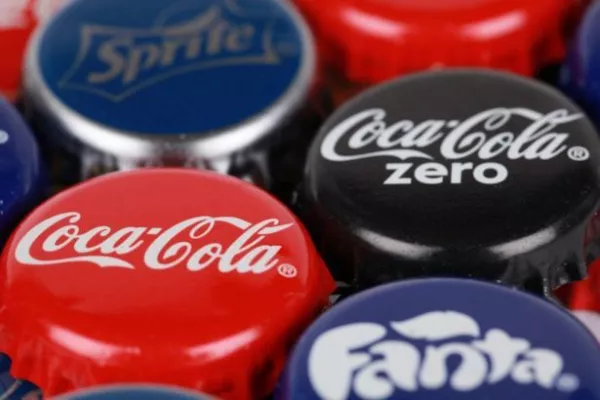Coca-Cola will step up its bid to transform the company into a far leaner operation under incoming Chief Executive Officer James Quincey after quarterly earnings missed estimates.
The soda giant vowed to cut costs by an additional $800 million a year, adding to a plan to wring $3 billion in savings. That will include 1,200 job cuts through 2018. The belt-tightening effort accompanies a move to spin off much of Coca-Cola’s bottling operations, one of the company’s biggest strategic changes in decades.
The 52-year-old Quincey takes the reins on 1 May from Muhtar Kent, who has been divesting bottling plants around the world. The company is trying to re-emerge as a more focused - and profitable - business, which will concentrate on developing new drinks and selling ingredients to partners.
Revenue fell 11 percent last quarter, with the structural changes accounting for 10 percent of the decline, the Atlanta-based company said.
The overhaul makes it more difficult for investors to assess the results, said Ken Shea, an analyst at Bloomberg Intelligence.
“It’s hard to find the underlying profitability with this company at the moment,” he said. “It’s almost like investors have to take the company’s word for ‘Look, we’re going to get out of this plumbing change at the end of the year and at that point we’ll have our operating model in place to do some nice things.’”
On the bright side, Coca-Cola’s earnings per share may not decline as much as expected during the full year. The company now projects a drop of 1 percent to 3 percent, compared with a previous prediction of as much as 4 percent. Organic revenue, which excludes currency effects and structural changes, is expected to grow 3 percent.
Coca-Cola and rival PepsiCo Inc. are scrambling to add more non-cola beverages, coping with a shift by consumers away from traditional soft drinks. Per capita consumption of soda beverages sank to a 31-year low in the U.S. in 2016, according to Beverage-Digest, a trade publication.
C-Suite Additions
Quincey said he aims to expand Coca-Cola’s portfolio of drinks. That plan is already having an impact on its C-suite. Coca-Cola will have a chief growth officer and a chief innovation officer reporting directly to the CEO when he takes charge next week.
“We’ve laid out a clear path to transform the company for the future to be bigger than our past -- to be a company that is bigger than the Coca-Cola brand,” Quincey said in remarks on the company’s website.
Coca-Cola has also shifted its strategy to focus on profit growth, rather than volume. That’s included the introduction of smaller cans and bottles, which fetch higher prices per ounce than larger packages. After promoting the smaller packs in the U.S., the company is now taking the concept to emerging markets.
Soda producers also are grappling with greater regulatory burdens on their core products. Philadelphia was the first major U.S. city to implement a soft-drink tax in June. Similar measures have since passed in the San Francisco Bay area; Boulder, Colorado; and Illinois’s Cook County.
Coca-Cola’s sparkling-drink volume declined 1 percent in the first quarter. Though overall sales shrank, it still came in ahead of analysts’ estimates. Coca-Cola reported revenue of $9.12 billion, compared with a prediction of $8.87 billion.
The beverage maker expects to achieve the additional $800 million in cost savings by 2019.
“Next week I will proudly hand over the CEO reins to James Quincey with full confidence that he will complete the company’s transformation and lead our aggressive growth agenda,” Kent, 64, said in the statement.
News by Bloomberg, edited by Hospitality Ireland









